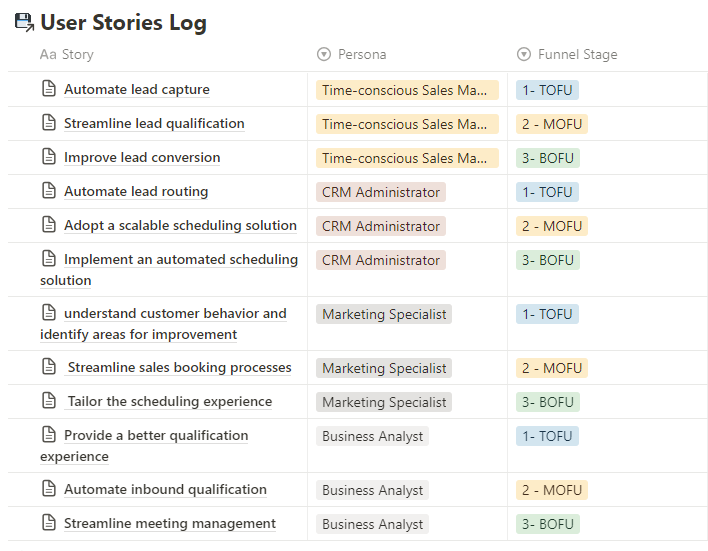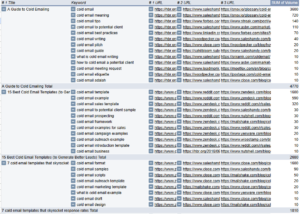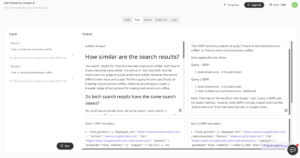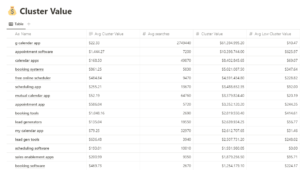Here’s a quick and easy way to plan 288+ clustered content topics relevant to your audience with AI.
I’ll also show you how to find low-competition topics you can rank for.
Finding relevant and low-competition topic ideas is challenging
It’s becoming increasingly difficult to find topic ideas that have SEO opportunities.
Most topics you find in keyword research tools are already covered by high-authority websites, so I always look elsewhere for low-competition ideas.
Solution: AI-assisted topic planning
This strategy reverse engineers user stories to create highly relevant content clusters using ChatGPT.
I then do some quick on-the-fly research to validate and prioritize topic ideas by looking for low DR sites that are getting decent traffic.
This makes it much easier to find lower-competition topics you can also rank for.
Step-by-step instructions
1. Plan user stories for each persona
From an SEO standpoint, a user story is the path a website visitor takes to get what they were looking for.
Example: learn something, schedule an appointment, make a purchase, etc.
Here is an example of a user stories log for a b2b scheduling software:
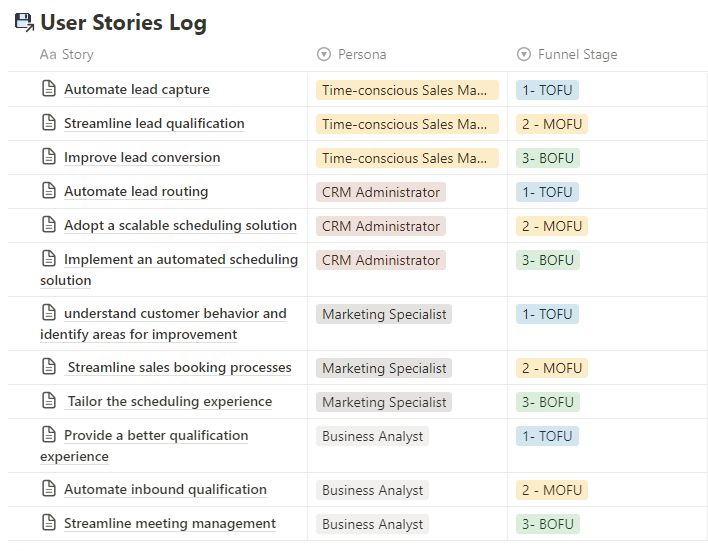
I picked four personas: sales, CRM, marketing, and analysts.
These archetypes are going to interact with appointment scheduling software frequently, and they all have different goals.
I have at least one user story for each stage of the funnel. You could have more or fewer personas depending on your brand and website.
I will use this info in the next stage to determine my topic clusters.
Let’s say an online scheduling software has a focus on getting b2b sales managers to visit their site.
That persona has different user journeys based on where they are in the purchase cycle. If they are just getting started they might be looking for ways to improve lead capture.
If they were closer to converting, the sales manager might be looking for ways to improve lead conversion rates.
A b2b sales manager would search for different things and interact with websites differently based on where they are at in their journey.
So your website needs content to meet them where they are at in their process.
2. Generate topic category ideas
Once I have personas and user stories for each funnel stage, I can plan content to tie this into traffic opportunities.
Any topics created from this will be focused on my personas, my audience, and specific user journeys.
You won’t have to worry about creating content of questionable relevance in the name of SEO gains with this strategy.
ChatGPT time
I prompted for top-of-funnel content topic category ideas for a specific persona and user story:
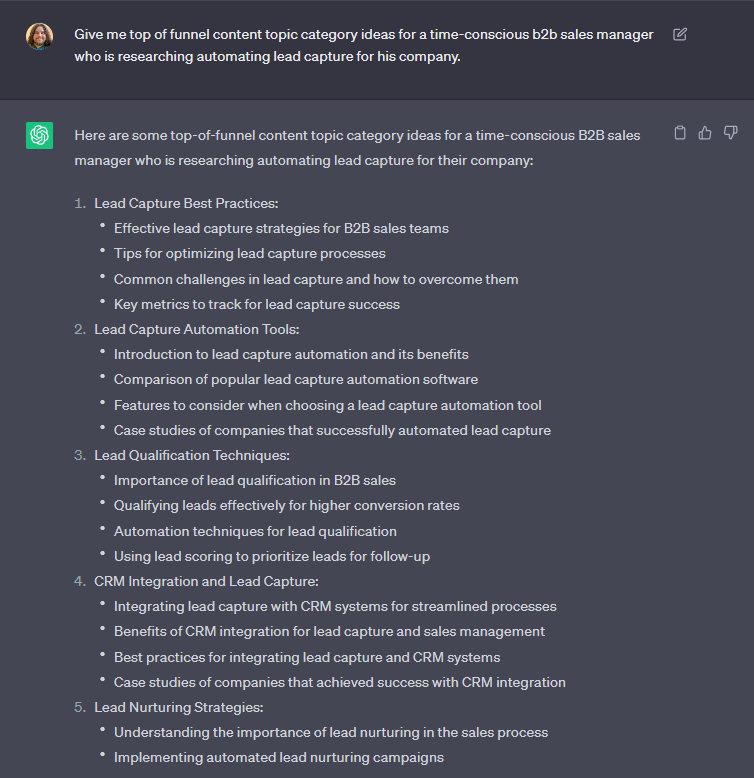
Here is the exact prompt I used: “Give me [FUNNEL STAGE] content topic category ideas for a [PERSONA] who is researching [USER STORY]”.
I got 6 great topic clusters and topic ideas. I then copy the list to a spreadsheet for the next step.
If you were doing this at scale you would simply repeat the process for your other personas, funnel stages, and user stories.
You could also add more parameters to get more topic ideas, avoid specific topics, etc.
3. Validate and snag topic ideas
Now that I have relevant categories and clusters that are on point with my audience, I simply go hunting for content ideas.
An easy way to do this is just exploring the SERPs while using a tool like the Ahrefs SEO Toolbar to help validate ideas.
With this method, I don’t need to know the right keywords. I just need some ideas to explore. I’ll also find plenty of new topic ideas along the way.
Here’s an example:
While searching “optimize lead capture process” (zero search volume topic) I found this DR 29 domain that ranks in the top 10 for several keywords related to “what is lead capture”.

My Ahrefs toolbar says it gets 77 visits per month. However, it probably gets more traffic than that because these tools aren’t 100% accurate.
Considering all the other pages were DR 80+, this is a great low DR opportunity for ranking.
When you’re hunting for topics, you’ll want to keep your site’s DR in mind. It represents how many links you will likely need to rank. If your website is a DR 20, you’re going to struggle to outrank DR 80+ sites, even with better content. If you were using a different tool like SEOquake, you might look at DS instead.
Another example:
Here’s a DR 43 bringing in 416 clicks a month (likely more) ranking for tips on generating b2b leads.
Compared to the higher authority competition, this is also a great topic opportunity.

I’m looking for two things:
- A lower DR I my site can compete with
- Decent organic search traffic (the ST metric in the screenshots above).
If you are a DR 60 site, you can much more easily beat a DR 43 on their topic.
I then snag the low DR pages I FIND to use as a content topic idea by copying the URL to my spreadsheet. I just add my selected URLs right next to the topic ideas.

Using this method I easily mapped out 288 topics:
- 4 personas
- 3 user stories per persona (12 stories)
- 6 categories per user story (72 topic clusters)
- 4 topics per cluster (288 topics)
I can then find low-competition pages to target that my site can compete with quickly and easily whenever I need.
That’s more than a year of content for most brands!
Try it out easily
Simply plan some user stories, generate topic ideas, and validate on the fly.
You just need ChatGPT, a spreadsheet, and a browser extension that can show you page metrics.
Try it out and let me know what your thoughts are! You can connect with me on LinkedIn or email me at any time.
